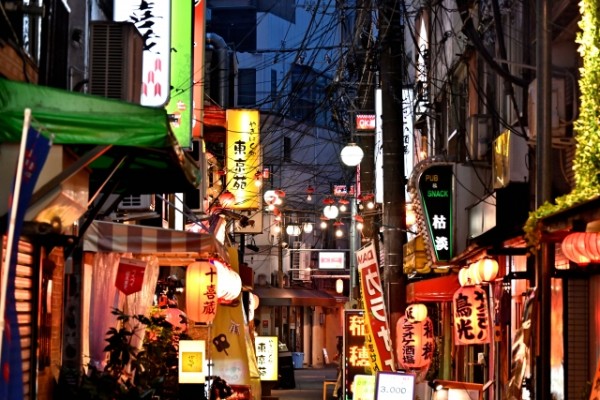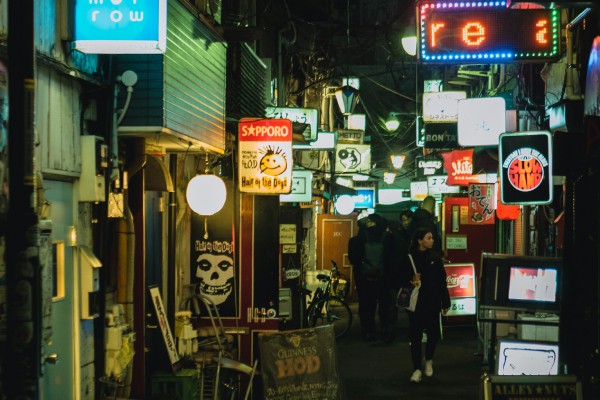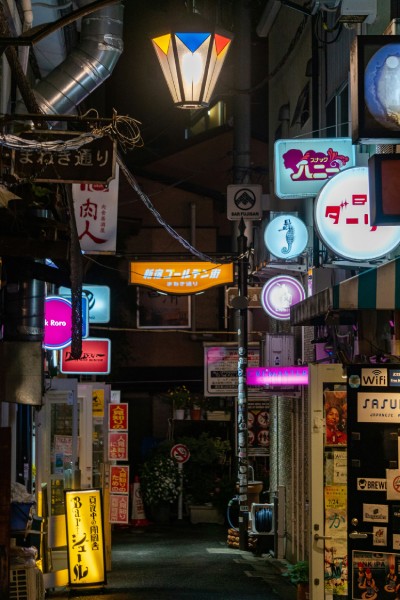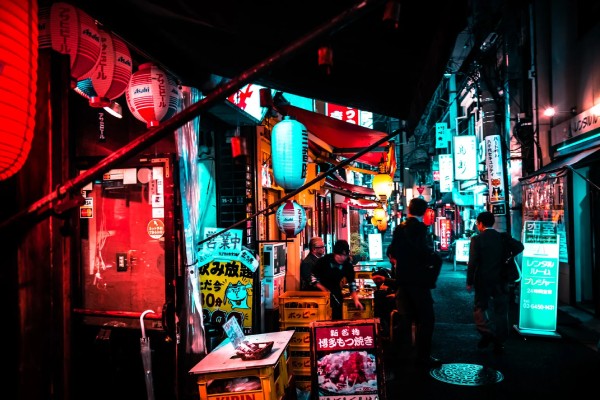Step into a Timeless World: A Guide to Japan's "Yokocho" Alleys.
Beyond the neon-drenched skyscrapers and futuristic cityscapes of modern Japan lies a hidden, more intimate world tucked away in narrow backstreets. These are the "yokocho" (横丁), or side alleys, vibrant labyrinths brimming with tiny bars, traditional eateries, and the warm glow of red lanterns. For any traveler seeking an authentic taste of Japanese culture, a visit to a yokocho is an unforgettable journey back in time.
What Exactly is a Yokocho?
"Yokocho" literally translates to "side alley." These networks of narrow lanes are packed with small, independent establishments, most of which can only seat a handful of customers at a time. Many yokocho originated in the post-war era, serving as black markets and hubs for affordable food and drink. Today, they retain that nostalgic "Showa-era" (1926-1989) atmosphere, offering a stark, yet charming, contrast to the polished image of contemporary Japan.
The Unique Characteristics and Appeal of Yokocho

The magic of yokocho lies in their distinct character:
Intimate and Cozy: With most shops being just counter-seating, you'll be elbow-to-elbow with fellow diners and the chef. This close proximity breaks down barriers and fosters a unique sense of community.
Nostalgic Atmosphere: Stepping into a yokocho feels like entering a time capsule. The weathered wooden storefronts, vintage posters, and the sizzle and steam rising from open kitchens create a deeply nostalgic and photogenic environment.
"Hashigo-zake" Culture: Yokocho are the perfect setting for "hashigo-zake," the Japanese equivalent of bar-hopping. The sheer density of establishments encourages you to sample a drink and a specialty dish at one spot before moving on to the next.
Authentic Interaction: This is where the locals unwind. It's a fantastic opportunity to strike up a conversation with the person next to you or the friendly owner (known as the "Master" or "Mama-san") and experience genuine Japanese hospitality.
Why are Yokocho So Popular with Visitors?
For international tourists, yokocho offer a chance to dive deep into the real Japan, away from the typical tourist trails. They provide an "authentic experience" that feels both cinematic and deeply personal. The affordability of the food and drink is another major draw, allowing you to sample a wide variety of Japanese cuisine, from yakitori (grilled chicken skewers) to ramen and oden (a type of hot pot), without breaking the bank. The visually rich, almost "Blade Runner-esque" scenery also makes them incredibly popular spots for photography.
Essential Rules and Etiquette for Your Yokocho Adventure

To ensure a smooth and enjoyable experience, it's helpful to understand the unwritten rules of these cozy spaces.
Cash is King: Many of these small, old-school establishments do not accept credit cards. Make sure to have enough Japanese Yen with you.
Mind the Space: Yokocho bars and eateries are notoriously small. Place your bag under your seat or on your lap, and be mindful of your personal space to avoid bumping into your neighbors.
The "Otoshi" Charge (お通し): Don't be surprised by a small, unsolicited appetizer that appears shortly after you sit down. This is "otoshi," a compulsory table charge that is standard practice in many izakayas. Consider it part of the experience.
Order at Least One Drink and One Food Item: It's generally expected that each person will order at least one drink and often at least one food item. These are not places to just sit and rest.
Don't Linger Too Long: During busy times, it's considered good manners to give up your seat after you've finished eating and drinking so that others can enjoy the experience. Yokocho are designed for quick stops, not long-drawn-out dinners.
Smoking: While Japan has stricter smoking laws now, some older, smaller establishments may still permit smoking. If you are sensitive to smoke, it's best to peek inside first.
Embrace Sharing: Given the tight quarters, you might find yourself sharing a table. A friendly nod or a simple "Konnichiwa" can go a long way.
Popular Yokocho to Explore in Tokyo

Tokyo is home to some of Japan's most famous and atmospheric yokocho. Here are a few must-visit spots:
Shinjuku Golden Gai (新宿ゴールデン街): Arguably the most famous yokocho, Golden Gai is a network of six tiny alleys packed with over 200 minuscule bars. Each has its own unique theme and character. It's an architectural marvel and a true icon of Tokyo's nightlife.
Omoide Yokocho, Shinjuku (思い出横丁): Known affectionately as "Memory Lane" or "Piss Alley," this yokocho is famous for its rustic yakitori stalls. Follow the smoke and delicious smells to find a seat under the lanterns for some of the best grilled skewers in the city.
Nonbei Yokocho, Shibuya (のんべい横丁): Just a stone's throw from the world-famous Shibuya Scramble Crossing, "Drunkard's Alley" offers a tranquil, retro escape from the modern chaos. It's a perfect spot for a quiet drink and intimate conversation.
Ebisu Yokocho (恵比寿横丁): A more modern take on the traditional yokocho, this indoor alley is housed within a former department store. It brings together a diverse collection of restaurants under one roof, creating a lively, festival-like atmosphere popular with a younger crowd.
Ameya Yokocho (Ameyoko), Ueno (アメヤ横丁): More of a bustling market street than a quiet drinking alley, Ameyoko still embodies the energetic, post-war spirit. Here you'll find everything from fresh seafood and discount goods to fantastic street food stalls and standing bars.

A visit to a yokocho is more than just a meal; it's a cultural immersion. It’s a chance to connect with the heart and soul of Japan, one skewer, one drink, and one friendly conversation at a time. So, be brave, dive into a narrow alley, pull up a stool, and make some delicious memories. Kanpai!
update